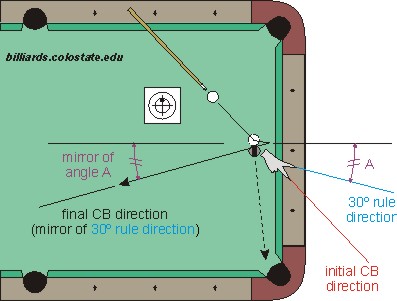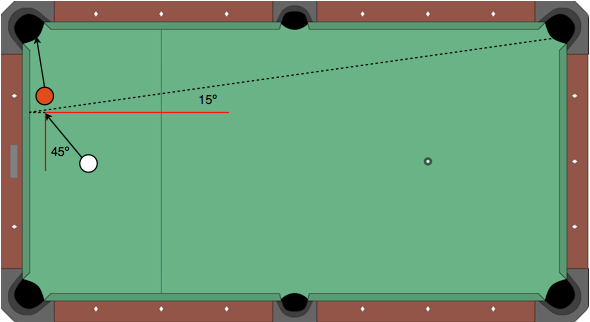How can I predict the direction the cue ball will head with non-frozen rail cut shots?
For rolling-cue-ball rail cut shots, you can use the 30° rule, as illustrated in the diagram below. The peace sign can be used to visualize the expected angle off the OB if the rail were not there, and the mirror of this angle gives you the final cue ball direction. An interesting fact is that the sum of the angle of the initial CB line relative to the rail and the mirror angle relative to the rail normal always adds to 60° (see the quote from mohrt below). This is because 90° – 30° = 60°. This is called the 60° rule (60 degree rule).

Using stun or draw or less than full forward roll can also be used to alter the path.
The mirroring in the diagram also works well with the trisect system for predicting CB direction off the rail with draw shots. For more information, and to see the effects of speed on all rail cut shots, see: “Rail Cut Shot CB Control” (BD, February, 2017).
With outside draw shots, where the OB is fairly close to the cushion (between about 1/2 and 1 1/2 ball), a useful reference is the line of the shot. As presented on VEPS-II, with the right amount of outside draw, the CB can be pulled back along the shot line over a wide range of angles. Here’s an example:
See rail cut shot position control for lots of examples of how english can be used to alter the path of the CB.
from mohrt:

If you come into the rail at 30°, the path will be 30° out. If you come in at 15°, it will be 45° out. If you come in at 25°, it will be 35° out. Notice it always adds up to 60°.
